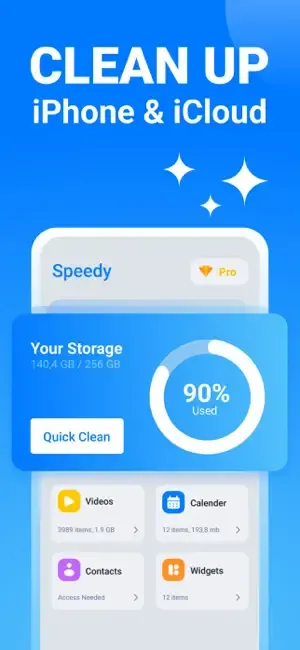.jpg)
The Problems of Spam Email and its solution
In today's digital age, where communication is primarily conducted through emails, the problem of spam emails persists as a significant challenge. Spam emails, also known as junk emails, are unsolicited messages sent in bulk to a large number of recipients, often with malicious intent. From cluttering inboxes to spreading malware, the problems associated with spam emails are widespread and can have detrimental effects on individuals, businesses, and organizations alike. In this blog post, we will delve deeper into the various issues posed by spam emails and explore potential solutions to mitigate their impact.
The Proliferation of Spam Emails
The sheer volume of spam emails circulating on the internet is staggering. According to reports, over half of all emails sent worldwide are classified as spam. These emails range from harmless advertisements to phishing scams and malicious malware. The proliferation of spam emails not only inundates users' inboxes but also poses significant risks to cybersecurity.
Threats to Cybersecurity
One of the most pressing issues associated with spam emails is the threat they pose to cybersecurity. Cybercriminals often use spam emails as a vector to deliver malware, such as viruses, ransomware, and spyware, to unsuspecting users' devices. These malicious programs can compromise sensitive data, disrupt operations, and cause financial losses.
Phishing emails, a type of spam email that impersonates legitimate entities to trick users into divulging personal information, are also a major concern. By masquerading as reputable organizations like banks, social media platforms, or government agencies, phishing emails attempt to deceive recipients into clicking on malicious links or providing login credentials, leading to identity theft and fraud.
Productivity Loss and Resource Drain
Beyond the cybersecurity threats, spam emails also result in productivity loss and resource drain for individuals and organizations. Sorting through a flood of spam emails to find legitimate messages consumes valuable time and effort. Employees spend precious hours each day filtering out spam, which can impact their overall productivity and focus on critical tasks.
For businesses and organizations, managing spam emails incurs additional costs in terms of cybersecurity measures, email filtering software, and potential damage control from security breaches. Moreover, the reputation of a company can suffer if its email servers are identified as sources of spam, leading to blacklisting by email service providers and reduced trust among customers and partners.
Invasion of Privacy
Spam emails often intrude upon individuals' privacy by collecting personal information without consent. Many spam emails employ tactics like tracking pixels and web beacons to monitor recipients' activities, such as when they open an email or click on a link. This invasion of privacy raises concerns about data protection and user confidentiality.
Moreover, the indiscriminate nature of spam emails means that they can reach anyone, regardless of age, demographic, or location. Vulnerable populations, such as children and the elderly, are particularly susceptible to phishing scams and online fraud, highlighting the need for greater awareness and education about cybersecurity best practices.
Environmental Impact
The environmental impact of spam emails is often overlooked but nonetheless significant. The energy and resources required to transmit, store, and process billions of spam emails annually contribute to carbon emissions and electronic waste. Data centers that handle spam filtering and storage consume vast amounts of electricity, leading to environmental degradation and climate change.
Solutions and Best Practices
Addressing the problems of spam emails requires a multifaceted approach involving technology, legislation, education, and user awareness. Here are some solutions and best practices to combat spam:
Email Filtering: Implement robust email filtering software that can identify and block spam emails before they reach users' inboxes. Utilize machine learning algorithms and heuristic analysis to improve detection accuracy and reduce false positives.
User Education: Educate users about the risks of spam emails and how to recognize and avoid them. Provide training on cybersecurity best practices, such as avoiding clicking on suspicious links, verifying sender identities, and reporting phishing attempts.
Strong Authentication: Implement email authentication protocols like SPF (Sender Policy Framework), DKIM (DomainKeys Identified Mail), and DMARC (Domain-based Message Authentication, Reporting, and Conformance) to verify the authenticity of email senders and prevent domain spoofing.
**Legislation and Enforcement: **Enact and enforce laws and regulations to deter spammers and hold them accountable for illegal activities. Collaborate with international law enforcement agencies to prosecute cybercriminals engaged in spamming and phishing operations.
User Empowerment: Empower users with tools and resources to control their email preferences and opt-out of unsolicited communications. Provide clear unsubscribe links and honor users' requests to stop receiving spam emails promptly.
Global Collaboration: Foster international cooperation and information sharing among governments, industry stakeholders, and cybersecurity experts to combat spam on a global scale. Develop partnerships and initiatives to raise awareness and promote cybersecurity hygiene worldwide.
Conclusion
In conclusion, the problems of spam emails persist as a pervasive threat in the digital landscape, posing risks to cybersecurity, privacy, productivity, and the environment. Addressing these challenges requires a concerted effort from all stakeholders, including individuals, businesses, governments, and technology providers. By implementing robust security measures, educating users, and fostering global collaboration, we can mitigate the impact of spam emails and create a safer and more secure online environment for all.
Its use only United country 100% free
.jpg)
** Install and Use the Speedy Cleaner App!
https://tundrafile.com/show.php?l=0&u=2019552&id=63227**
**Install the RoboKiller App and Start Your Trial!
https://singingfiles.com/show.php?l=0&u=2019552&id=58327
